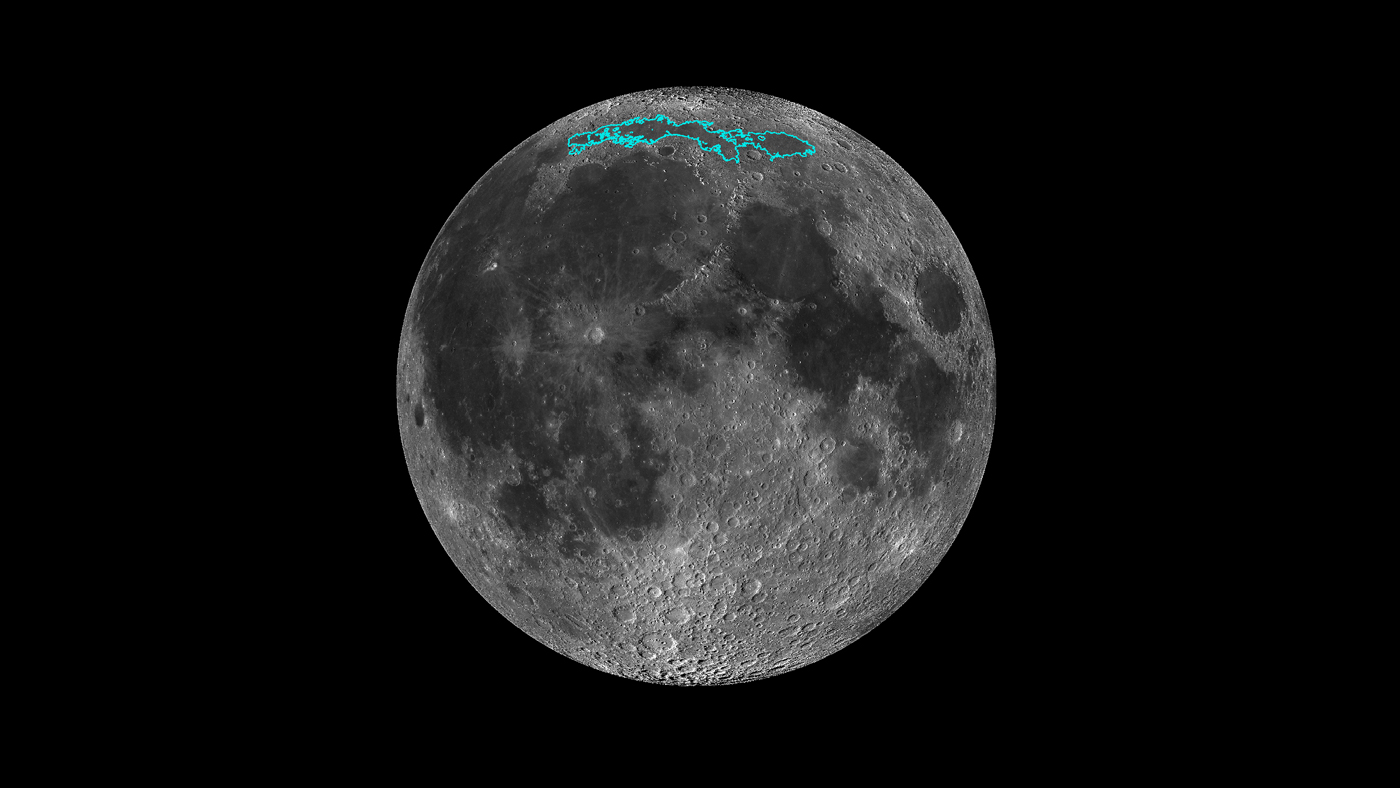Billions of years ago, Earth’s Moon formed vast basins called “mare” (pronounced MAR-ay). Scientists have long assumed these basins were dead, still places where the last geologic activity occurred long before dinosaurs roamed Earth.
But a survey of more than 12,000 images reveals that at least one lunar mare has been cracking and shifting as much as other parts of the Moon — and may even be doing so today. The study adds to a growing understanding that the Moon is an actively changing world.
Taken by NASA’s Lunar Reconnaissance Orbiter Camera (LROC), the images reveal “wrinkle ridges” — curved hills and shallow trenches created by a lunar surface that is contracting as the Moon loses heat and shrinks. The features are described in a study published in Icarus on March 7, 2019, and led by Nathan Williams, a post-doctoral researcher at NASA’s Jet Propulsion Laboratory in Pasadena, California.
Previous research has found similar surface features in the Moon’s highlands, but wrinkle ridges have never been seen in basins before now. For this study, Williams and his co-authors focused on a region near the Moon’s north pole called Mare Frigoris, or the Cold Sea.
The study estimates that some of the ridges emerged in the last billion years, while others may be no older than 40 million years old. That’s relatively fresh in geologic terms; previous studies have estimated these basins all stopped contracting about 1.2 billion years ago.
Both Earth and its Moon experience what’s known as tectonics, processes that push up mountains, rip apart land masses and create quakes. On Earth, these processes occur constantly as the planet’s mantle causes pieces of crust, called plates, to shift against one another. The Moon doesn’t have tectonic plates; instead, its tectonic action occurs as the Moon slowly loses heat from when it was formed nearly 4.5 billion years ago. The heat loss causes its interior to shrink, crinkling the surface and creating distinctive features like those identified in the study.
“The Moon is still quaking and shaking from its own internal processes,” Williams said. “It’s been losing heat over billions of years, shrinking and becoming denser.”
The effect is similar to a car tire in winter: As the temperature drops, air inside the tire contracts and creates a squishier surface.
Evidence of a Shrinking Moon
The Moon’s tectonic action is especially visible in Mare Frigoris. By poring over more than 12,000 images taken by LRO’s camera, Williams and his co-authors identified thousands of tectonically created features.
As the ground under Mare Frigoris shifts, it pushes up wrinkle ridges, which typically snake along the ground for several miles. The longest ones stretch about 250 miles (400 kilometers) — greater than the distance between New York City and Washington, D.C. — and rise as much as 1,000 feet (333 meters). Tectonic pushing and pulling of the lunar crust also sculpt curved hills called lobate scarps and shallow trenches known as graben.
Geologists can date them by studying another common lunar feature: impact craters. The longer a surface is struck by meteors, the more debris gets flung up from the impacts and covers nearby terrain, altering the landscape in a process called “impact gardening.”
Craters collect more debris the longer they are around. The smaller they are, the less time they take to fill: Craters smaller than the size of a football field would typically fill to the brim in under a billion years. LROC’s images revealed crisp tectonic features like the wrinkle ridges that formed after — and cut through — small, unfilled craters. That allowed Williams and his co-authors to deduce that the ridges emerged within the past billion years or so.
From Moonquakes to Marsquakes
Studying seismic activity on the Moon isn’t new. The Apollo astronauts brought several seismometers to the lunar surface, which recorded thousands of moonquakes between 1969 and 1977. The vast majority were quakes that occurred deep in the Moon’s interior; a smaller number were determined to be of shallow depth, occurring in the lunar crust.
A new paper in Nature Geoscience takes another look at these shallow moonquakes and establishes connections to some very young surface features called lobate thrust fault scarps. This opens the door to looking for similar connections with young wrinkle ridges described in the Icarus study.
Scientists — including Williams — now hope to glean similar science from Mars. NASA’s InSight lander recently detected what is likely its first marsquake, along with several other seismic signals. The way a quake’s seismic waves travel inside a planet can tell geologists about how rocky bodies are layered. That, in turn, can deepen our understanding of how Earth, its Moon and Mars first formed.
NASA’s Lunar Reconnaissance Orbiter was built and is operated by the agency’s Goddard Space Flight Center in Greenbelt, Maryland. Goddard manages the LRO mission for the Science Mission Directorate at NASA Headquarters in Washington.
NASA’s Jet Propulsion Laboratory in Pasadena, California, leads the InSight mission.
For more information on LRO, visit:
For more information about InSight, visit:
https://mars.nasa.gov/insight/
Andrew Good
Jet Propulsion Laboratory, Pasadena, Calif.
818-393-2433
andrew.c.good@jpl.nasa.gov
2019-086
































